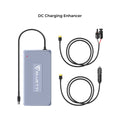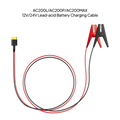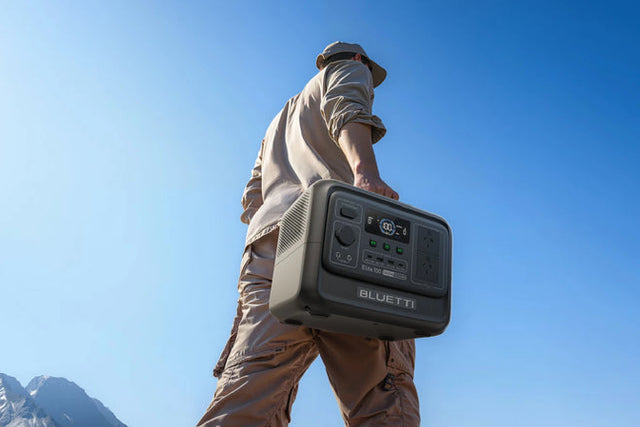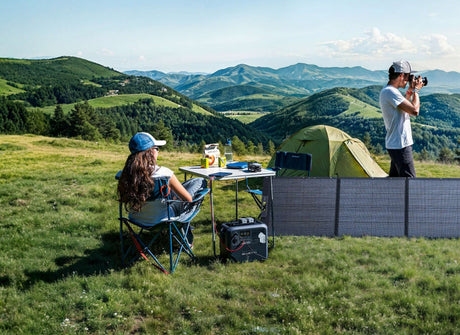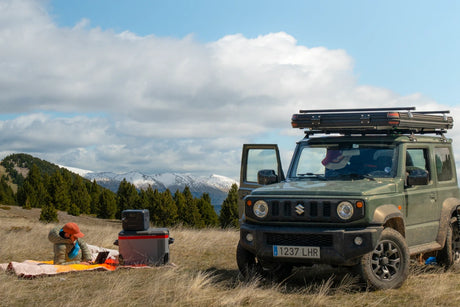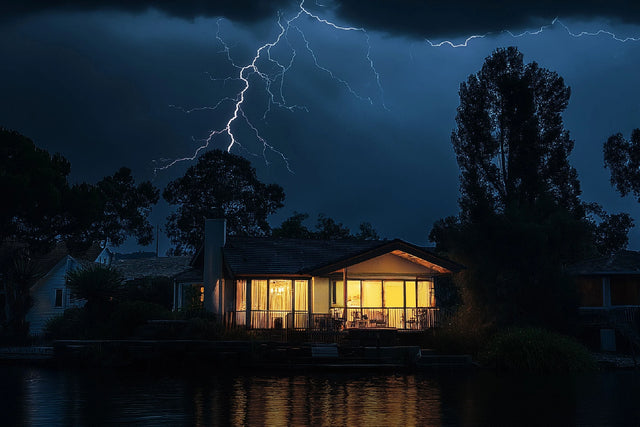Off-grid living has become increasingly popular in recent years, and with good reason. It allows individuals to break away from traditional societal norms and live a more self-sufficient and sustainable lifestyle. And one essential component of off-grid living is an off-grid caravan solar system. But what exactly is an off-grid caravan solar system, and why is it important for those seeking a more independent and eco-friendly way of living? In this article, we will delve into the basics of off-grid caravan solar systems, their benefits, and how they work, to help you understand how this renewable energy source can enhance your off-grid lifestyle.
An off-grid caravan solar system is a self-sufficient and sustainable power source for your caravan. It utilizes the energy from the sun to power your caravan's appliances and devices, allowing you to live off-grid without the need for traditional electricity. This system is a popular choice among outdoor enthusiasts, travelers, and those looking to reduce their carbon footprint.
Why should you consider an off-grid solar system for your caravan?
There are numerous reasons why an off-grid solar system is a beneficial investment for your caravan. Firstly, it provides you with the freedom to travel to remote and secluded locations without worrying about access to electricity. With an off-grid solar system, you can rely on the power of the sun to meet your energy needs, making your travels more adventurous and fulfilling.
An off-grid solar system is a cost-effective option for long-term caravan travelers. Traditional electricity can be expensive, especially in remote areas. By switching to solar power, you can save on electricity bills and reduce your overall travel expenses. Additionally, with solar technology becoming more affordable, installing an off-grid system is now a more feasible and practical option for many caravan owners.
Off-grid solar systems are environmentally friendly. They do not emit any pollutants or greenhouse gases, making them a sustainable and clean energy source. By using solar power, you can reduce your carbon footprint and contribute towards mitigating the harmful effects of traditional energy sources on the environment.
Off-grid caravan solar system also offers you the flexibility to customize your power usage according to your needs. You can add more panels or batteries to your system to accommodate for increased energy usage, such as adding more appliances or devices. This flexibility allows you to tailor your energy usage to your specific requirements, making it a highly efficient and practical solution for a mobile lifestyle.
An off-grid solar system greatly increases your caravan's self-sufficiency. If you rely solely on traditional electricity, you are limited by the availability and reliability of power sources. However, with solar energy, you are not dependent on external sources for your energy needs. This independence also offers you peace of mind during power outages or emergencies.
Off-grid solar system can increase the resale value of your caravan. As more people are becoming environmentally conscious and seeking sustainable solutions, an off-grid system can be a valuable selling point for your caravan. It also demonstrates that your caravan is equipped for off-grid living, appealing to a larger market of potential buyers.
Off-grid caravan solar system provides numerous benefits, including freedom and flexibility, cost-effectiveness, sustainability, self-sufficiency, and resale value. It is a worthwhile investment for any caravan owner, offering a reliable, clean, and efficient energy source for your travels.
What Is An Off-Grid Caravan Solar System?
An off-grid caravan solar system is a self-sufficient energy system that allows caravan owners to power their vehicle using renewable energy sources. It is designed for those who love the freedom of being on the road and want to reduce their carbon footprint by using clean energy. This type of system is commonly used by travelers, campers, and outdoor enthusiasts who want to explore remote areas without relying on traditional energy sources.

An off-grid caravan solar system consists of various components that work together to generate, store, and distribute electricity. These include solar panels, batteries, charge controllers, inverters, and wiring. Let's take a closer look at each of these essential components and how they contribute to the functioning of an off-grid caravan solar system.
Solar Panels
Solar panels are the main source of energy in an off-grid caravan solar system. These panels are mounted on the roof of the caravan to capture sunlight and convert it into electricity. The electricity produced by the solar panels is direct current (DC) which can be used to power 12-volt appliances in the caravan or stored in batteries for later use.
When choosing solar panels for an off-grid caravan solar system, it is important to consider the size and wattage of the panels. The size will depend on the available space on the caravan's roof, while the wattage will determine the amount of electricity that can be generated. It is recommended to opt for high-efficiency solar panels to maximize the electricity output.
Batteries
Batteries are crucial for storing the electricity generated by the solar panels. They serve as a backup power source when there is no sunlight available, such as during cloudy days or at night. The size and capacity of the batteries will depend on the energy needs of the caravan owner. Deep cycle batteries are typically used in off-grid caravan solar systems as they are designed for continuous and long-term use.
It is important to properly maintain the batteries in an off-grid caravan solar system to ensure their longevity. This includes regularly checking the water levels, avoiding overcharging, and keeping them in a cool and dry place.
Charge Controllers
Charge controllers are essential for regulating and controlling the flow of electricity from the solar panels to the batteries. They ensure that the batteries are not overcharged, which can damage them. Charge controllers also prevent reverse current flow, which can drain the batteries. These controllers come in different types, such as PWM (Pulse Width Modulation) and MPPT (Maximum Power Point Tracking), and the choice will depend on the specific needs of the caravan owner.
Inverters
Inverters are responsible for converting the direct current (DC) electricity from the solar panels and batteries into alternating current (AC) electricity that can be used to power household appliances. They are necessary for running devices that require more than 12 volts, such as laptops, TVs, and kitchen appliances. The size and type of inverter will depend on the energy needs of the caravan owner and the appliances they want to power.
Wiring
Wiring is the backbone of an off-grid caravan solar system as it connects all the components together. It is crucial to use high-quality and properly sized wiring to ensure efficient and safe electricity flow. The wiring should be able to handle the voltage and current of the system without overheating or causing fires.

How to Choose the Right Solar Panels for Your Caravan?
The most crucial component of an off-grid caravan solar system is the solar panels. These are the devices that capture the sun's energy and convert it into electricity. Therefore, it is essential to choose the right solar panels for your caravan to ensure optimal performance and efficiency. Here are some factors to consider when selecting solar panels for your off-grid caravan solar system:
1. Power Output
The power output of solar panels is measured in watts. The higher the wattage, the more electricity the panels can produce. When choosing solar panels for your caravan, consider the energy needs of your appliances and electronics. You may need multiple panels to meet your power requirements, depending on the wattage of each panel.
2. Size and Weight
The size and weight of solar panels are crucial when selecting panels for a caravan. Caravans have limited space, and every inch counts. Therefore, it is essential to choose panels that are compact and lightweight to maximize the available space. Lightweight panels also reduce the overall weight of your caravan, making it easier to tow.
3. Efficiency
The efficiency of solar panels refers to the percentage of sunlight that can be converted into electricity. A higher efficiency means that the panels can produce more electricity using the same amount of sunlight. Look for panels with an efficiency of at least 15% for optimal performance.
4. Durability
Since solar panels will be exposed to the elements while mounted on your caravan's roof, they need to be durable and able to withstand harsh weather conditions. Look for panels that are made with high-quality materials and have a sturdy frame to ensure longevity.
5. Compatibility with Charge Controller
The charge controller is a vital component of an off-grid caravan solar system as it regulates the flow of electricity from the panels to the batteries. When choosing solar panels for your caravan, make sure they are compatible with the charge controller you plan to use.
6. Warranty
Solar panels are a significant investment, and it is essential to choose panels that come with a warranty. Most manufacturers offer a warranty of 25 years, which covers any defects or issues with the panels. Make sure to read the warranty terms and conditions before making a purchase.
What Size Solar Battery Do You Need for An Off-Grid Caravan System?
The size of the solar battery needed for an off-grid caravan system depends on various factors such as the power consumption of the appliances and devices, the duration of use, and the number of solar panels in the system. Generally, the larger the battery capacity, the longer the caravan can operate without needing to recharge. However, it is essential to strike a balance between battery size and power consumption to ensure the system is efficient and cost-effective.
The first step in determining the size of the solar battery needed is to calculate the total power consumption of the caravan. This includes all the appliances and devices that will be powered by the system, such as lights, fridge, TV, and electronics. This can be done by checking the wattage of each item and multiplying it by the number of hours it will be used in a day.
The next step is to consider the duration of use. If you plan to use the caravan for extended periods, a larger battery will be needed to provide sufficient power. However, if you only plan to use it for short trips, a smaller battery may suffice. It is crucial to keep in mind that the battery's capacity will decrease over time, so it is better to err on the side of caution and go for a slightly larger battery.
The number of solar panels in the system is also a critical factor in determining the battery size. A larger solar array will produce more electricity, which in turn requires a bigger battery to store the excess energy. It is recommended to have a battery capacity that is at least twice the size of the solar panel output to ensure the system is not overloaded and can handle peak energy demands.
It is also essential to consider the climate and weather conditions of the area where the caravan will be used. Cloudy or rainy regions will require a larger battery to compensate for days with limited sunlight. On the other hand, if you are traveling to a sunny destination, a smaller battery may suffice as the solar panels will have more energy to harvest.

1. How does an off-grid caravan solar system work?
An off-grid caravan solar system is a self-sufficient energy system that powers a caravan or RV without the need for external electricity sources. It utilizes solar panels to collect sunlight and convert it into usable electricity.
The first component of an off-grid caravan solar system is the solar panels, which are typically mounted on the roof of the caravan. These panels consist of photovoltaic cells that absorb sunlight and convert it into direct current (DC) electricity. The size and number of solar panels needed depend on the energy requirements of the caravan.
The second component is the charge controller, which regulates the amount of electricity flowing from the solar panels to the battery. This is important to prevent the battery from overcharging, which can damage it. The charge controller also ensures that the battery is fully charged before any excess energy is sent to other components.
The third component is the battery, which stores the electricity generated by the solar panels. This energy can then be used to power appliances, lights, and other electronic devices in the caravan. The size and type of battery used will depend on the energy needs of the caravan and the system design.
The final component is the inverter, which converts the DC electricity from the battery into alternating current (AC) electricity, which is the standard form of electricity used in most appliances and devices. The inverter ensures that the electricity is at the right voltage and frequency for the appliances and devices in the caravan.
In summary, an off-grid caravan solar system works by capturing sunlight with solar panels, storing the energy in a battery, regulating the flow of electricity with a charge controller, and converting it into usable AC electricity with an inverter. This allows the caravan to be self-sufficient and run on renewable energy, making it a sustainable and environmentally-friendly option for travelers.
2. What are the essential components of an off-grid caravan solar system?
The essential components of an off-grid caravan solar system are the solar panels, battery bank, charge controller, and inverter. These components work together to harness and store solar energy to power the caravan's electrical appliances and devices.
Solar Panels: These are the primary component of the solar system, as they are responsible for converting sunlight into electricity. They are typically mounted on the roof of the caravan and can vary in size and number depending on the power needs of the caravan.
Battery Bank: The battery bank stores the electricity generated by the solar panels for use when the sunlight is not available. It is essential to have a sufficient battery capacity to power all the devices and appliances in the caravan.
Charge Controller: This component regulates the flow of electricity from the solar panels to the battery bank. It prevents overcharging and ensures that the batteries are charged at the optimal rate to prolong their lifespan.
Inverter: The inverter converts the direct current (DC) electricity stored in the batteries into alternating current (AC) electricity, which is the standard form of electricity used in most household appliances. This allows the caravan to power devices and appliances that require AC electricity.
In addition to these four main components, an off-grid caravan solar system may also include a backup generator, a battery monitor, and a power management system. These components help to ensure the efficient and reliable operation of the solar system while providing convenience and peace of mind to the caravan owner.
3. How can I determine the appropriate size and capacity for my off-grid caravan solar system?
| Appliance | Power (Watts) | Daily Usage (Hours) | Daily Consumption (Wh) |
|---|---|---|---|
| LED Lights (5 lights) | 10W | 5 hrs | 50 Wh |
| 12V Fridge | 40W | 24 hrs | 960 Wh |
| Water Pump | 50W | 1 hr | 50 Wh |
| Laptop | 60W | 3 hrs | 180 Wh |
| Mobile Phone (Charging) | 10W | 3 hrs | 30 Wh |
| Tablet (Charging) | 15W | 3 hrs | 45 Wh |
| Fan | 20W | 8 hrs | 160 Wh |
| Inverter | 50W (idle) | 5 hrs | 250 Wh |
| TV | 80W | 4 hrs | 320 Wh |
| Microwave | 800W | 0.1 hr (6 mins) | 80 Wh |
| Toaster | 800W | 0.1 hr (6 mins) | 80 Wh |
| Kettle | 1200W | 0.05 hr (3 mins) | 60 Wh |
| Blender | 300W | 0.1 hr (6 mins) | 30 Wh |
| Radio | 10W | 4 hrs | 40 Wh |
| Electric Blanket | 60W | 8 hrs | 480 Wh |
| Air Conditioner (Portable) | 1000W | 5 hrs | 5000 Wh |
| Heater (Portable) | 1000W | 3 hrs | 3000 Wh |
| Camera Charger | 5W | 2 hrs | 10 Wh |
| Electric Stove | 1000W | 1 hr | 1000 Wh |
| Hair Dryer | 1200W | 0.1 hr (6 mins) | 120 Wh |
Determining the appropriate size and capacity for an off-grid caravan solar system requires careful consideration of several factors. First, you will need to assess your power consumption needs. This includes calculating the total wattage of all the appliances and devices you plan to use in your caravan, such as lights, fridge, water pump, and electronics. You can find this information on the labels of your appliances or by using an online calculator.
Next, you will need to consider the location and orientation of your solar panels. The amount of sunlight your panels receive will directly affect the efficiency and output of your system. You can use a solar panel angle calculator to determine the best tilt and orientation for your panels based on your location.
You should also consider the battery storage capacity of your system. This will depend on the amount of power you will be consuming and the number of days you want your system to be able to provide power without any additional charging. A general rule of thumb is to have a battery capacity that is at least 2-3 times the daily watt-hour consumption of your system.
it is important to consult with a professional or do thorough research to ensure that your system is properly sized and can meet your power needs. Investing in a larger system than you think you need may be more expensive upfront, but it will provide you with greater reliability and convenience in the long run.












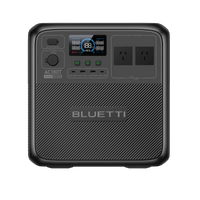












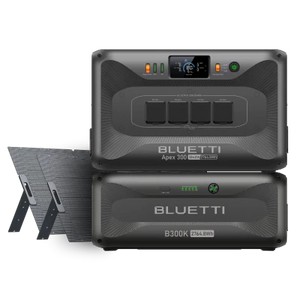





















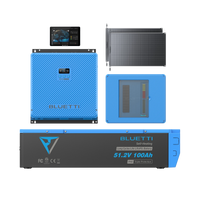


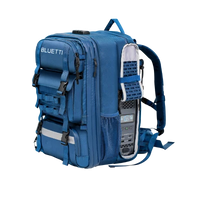


















![[Phased Out] BLUETTI B80P Expansion Battery | 806Wh](http://www.bluettipower.com.au/cdn/shop/files/202310025B80P_2000-2000px_4_4caa0c1c-4dab-4272-9e9b-2b7507e5bd81.jpg?v=1713777870&width=200)
![[Phased Out] BLUETTI B210P Expansion Battery | 2,150Wh](http://www.bluettipower.com.au/cdn/shop/files/2_08cf9ef3-03a4-4489-b641-d3edb8094896.webp?v=1716016566&width=200)
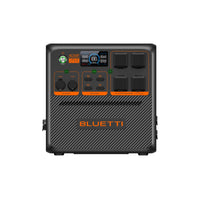


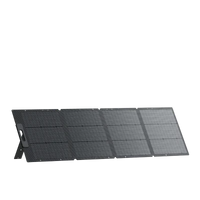


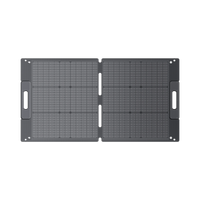





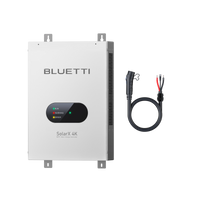






















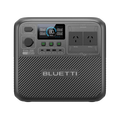

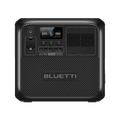






























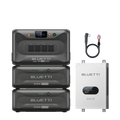



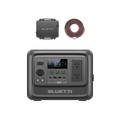





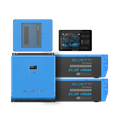














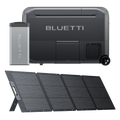




















![[Phased Out] BLUETTI B80P Expansion Battery | 806Wh](http://www.bluettipower.com.au/cdn/shop/files/202310025B80P_2000-2000px_4_4caa0c1c-4dab-4272-9e9b-2b7507e5bd81.jpg?v=1713777870&width=120)
![[Phased Out] BLUETTI B210P Expansion Battery | 2,150Wh](http://www.bluettipower.com.au/cdn/shop/files/2_08cf9ef3-03a4-4489-b641-d3edb8094896.webp?v=1716016566&width=120)


















